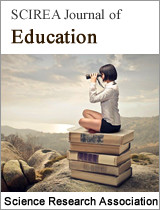“USiena” vs “only video”: comparing the two models for a mobile course design
DOI: 377 Downloads 14118 Views
Author(s)
Abstract
The aim of the research is to investigate how the technological tools that support traditional teaching methods (such as the video files recorded by the lecturer) help learners to study improving their evaluations for examinations. Starting from multimedia learning theories, a mobile course model has been designed using the User-Centered Design methodology (USiena) and the experimental method has been used to carry out a "pilot study" with 32 students. The goal of experimentation was to compare learning results through four experiments, performed in a "mobility environment" (an outdoor area near the university building, using an iPad with "iTunesU App" installed). The experimental hypothesis was that USiena model would favor the contents transmission, compared to a model that only provides for the - lecturer vision that explains (Sparring). The experimentation results have confirmed this hypothesis: students who used USiena model have obtained an average score of 26/30, against a 22/30 rating for the "video-only" model.
Keywords
Experimentation, iTunesU, Mobile, Mobile learning, Participatory planning, Prototyping, User-Centered Design
Cite this paper
Antonio Giardi,
“USiena” vs “only video”: comparing the two models for a mobile course design
, SCIREA Journal of Education.
Volume 1, Issue 1, December 2016 | PP. 1-14.
References
| [ 1 ] | Chandler, P. & Sweller, J. (1991). “Cognitive load theory and the format of instruction”, Cognition and Instruction, Vol. 8, Issue 4, pp. 293 – 332 doi:10.1207/s1532690xci0804_2 |
| [ 2 ] | Karat, J., & Karat, C., M. (2003). “The evolution of user-centred focus on the human-computer interaction field”, IBM Systems Journal, Vol. 42, Issue 4, October 2003, pages 532–541 |
| [ 3 ] | Mayer, R., E. (2000). “Intelligence and education”, Handbook of intelligence, Sternberg, Robert. J. (Ed), New York, NY, pp. 519-533 |
| [ 4 ] | Mayer, R., E. (2001). Multimedia Learning. New York: Cambridge University Press |
| [ 5 ] | Mayer, R., E. (2005). “Cognitive Theory of Multimedia Learning”, The Cambridge Handbook of Multimedia Learning, Cambridge, U.K.: Cambridge University Press, pp. 31-48 doi:10.1017/CBO9780511816819.004 |
| [ 6 ] | Norman, D., A. (1988). The design of everyday things, New York, NY: Basic Books (pubblicato originariamente con il titolo – The psychology of everyday things) |
| [ 7 ] | Norman, D., A. (1990). La caffettiera del masochista. Psicopatologia degli oggetti quotidiani, Milano, Giunti |
| [ 8 ] | Norman, D., A. (2013). Design of Everyday Things: Revised and Expanded, New York: Basic Books, London: MIT Press (UK edition) |
| [ 9 ] | Norman, D., A. & Draper, S., W. (1986). User-Centered System Design: New Perspectives on Human-Computer Interaction, Lawrence Earlbaum Associates, Hillsdale, NJ |
| [ 10 ] | Paivio, A. (1991a). “Dual coding theory: retrospect and current status”, Canadian journal of Psychology, Vol. 45, No. 3, pp. 255 – 287 doi:10.1037/h0084295 |
| [ 11 ] | Paivio, A. (1991b). Images in mind:the evolution of a theory, Harvester Wheatsheaf, New York, pp. 12 |
| [ 12 ] | Schnotz, W. (2001). “Sign systems, technologies, and the acquisition of knowledge”, Using Complex Information Systems, Rouet, J. F., Levonen, J., & Biardeau, A. (eds.), Poitiers, France, Pergamon Press, pp. 9 – 29 |

